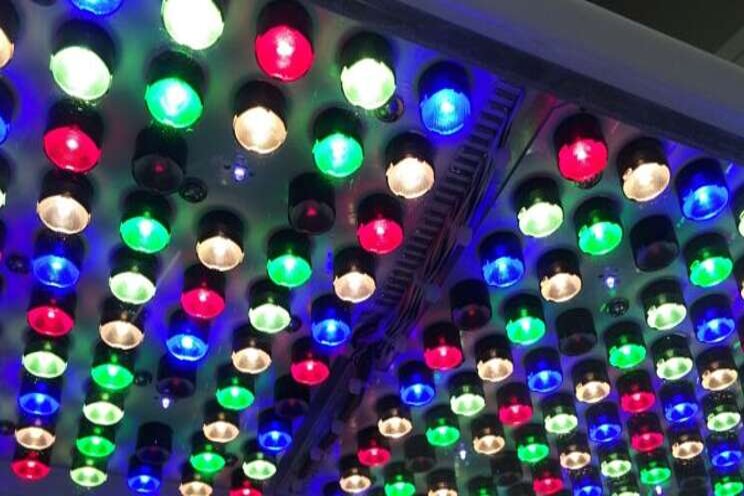What is the ideal lighting spectrum?
Added on 28 July 2020

With LEDs, we can tailor the light spectrum to elicit specific growth responses. This article discusses some of the considerations to identify an "ideal" plant lighting spectrum. As you will read, it's highly situational.
Lighting application. There are three major types of plant lighting applications: photoperiodic lighting to control flowering, supplemental lighting in greenhouses to increase growth and yield, and sole-source lighting to produce crops indoors (without sunlight). Spectral considerations vary among these three lighting types.
Photoperiodic lighting: When the days are naturally short, photoperiodic lighting is the delivery of low-intensity light at night to inhibit flowering of short-day plants and promote flowering of long-day plants. A lamp that primarily emits red light is most effective at controlling flowering of short-day plants. In contrast, to promote flowering of a range of long-day plants, a combination of red and far-red light is recommended. The effect of the spectrum of photoperiodic lighting is greatest when the daily light integral (DLI) is low (such as 8 molˇm-2ˇd-1 or less).
Supplemental lighting: Similar to photoperiodic lighting, the effect of the spectrum on plant growth is greatest when the DLI from the sun is low. For some crops, a moderate percentage of blue light can inhibit stem and leaf expansion, and increase the coloration of leaves. This blue-light response may be desirable for young plants and ornamentals, but not necessarily for highwire crops such as tomato.
Indoor lighting: The spectrum from electric lamps has the greatest effect when plants are grown without sunlight. Here, the amount of blue light controls extension growth, including of stems and leaves. Thus, if you want to produce compact plants with smaller, thicker and darker leaves, provide more blue light. For edibles such as lettuce, blue light can also increase the nutritional content, but can also make it taste more bitter. A grower may wish to include far-red light in indoor lighting if taller stems, larger leaves, and/or earlier flowering is desired.
Desired crop responses. For indoor lighting, and to a lesser extent for supplemental greenhouse lighting, the spectrum influences growth responses. The choice of a light spectrum thus depends on what plant characteristics are of most value. Unfortunately, there are some trade-offs with growth responses. For example, it's practically impossible to produce a plant with short stems yet large leaves, or to produce large leaves that are also darker green. One then has to weigh the different plant responses (which characteristics are of most importance) to identify an appropriate light spectrum for the crop(s).
Efficacy. Economics should also be considered when selecting an "ideal" light spectrum. The energy efficiency (efficacy) of an LED fixture depends, in part, on the composition of the individual types of LEDs (Figure 1). The most efficient ones are red LEDs, while greens are the least. Usually fixtures with the highest efficacy, and therefore consume the least amount of energy, primarily emit red light. If a specific light spectrum is more expensive to purchase and operate, one needs to determine whether the crop under it will have a higher value.
Human preference. A lighting spectrum optimized for plants may not be optimized for human vision. White LEDs are commonly used in horticulture for various reasons, including to create an environment suitable for working. Today, many horticultural LED fixtures include white LEDs because they are inexpensive and moderately efficient, and the spectrum is suitable for both plants and people.
In summary, an "ideal" lighting spectrum depends on the type of lighting, crop(s) grown, and desired growth responses. In addition, LED fixtures with different spectra often have different purchase and/or operation costs. Finally, consider the impact of the spectrum on plants as well as people who work in that environment.
PDF: What Is the Ideal Lighting Spectrum?
By Erik Runkle
Source and Photo Courtesy of Greenhouse Product News
Source: Greenhouse Product News
More news















